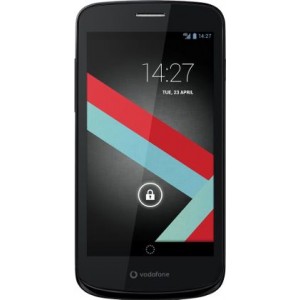Flash firmware on Coolpad Vodafone Smart 4G
Mobiles >> Coolpad >> Coolpad Vodafone Smart 4G| Specifications | Reviews | Secret codes |
| Unlock phone | Root phone |
| Backup | Flash Firmware | Screenshot |
How to flash Coolpad Vodafone Smart 4G?
Why reinstall the firmware?
Errors in the operation of the Android OS begin to appear.
Some applications do not open, reinstalling which does not lead to a positive result.
Many programs from the Play Market do not start.
The phone restarts by itself for no reason.
The phone slows down a lot during operation.
You want to update your firmware.
Where can I find the firmware?
On the website of your phone manufacturer.
On specialized services where users post custom or official OS.
What should be done before installing the firmware?
Create a backup copy of user data and transfer it to your computer.
Insert your SD card into your phone. It must have enough memory to fit the firmware.
Remember your smartphone model.
Fully charge your device.
Find and download the archive with Firmware.
Installing TWRP Recovery
Install the Official TWRP App via the Play Market. And run this application.
At the first start, you need to give consent to future manipulations, as well as consent to granting the Superuser rights to the application. Check the checkboxes and press the 'OK' button.
On the next screen, you need to select the 'TWRP FLASH' item and give the application root-rights.

On the main screen of the application, select 'Select Device', and find your phone model.
After selecting a phone, the application will direct the user to a web page to download the modified recovery environment image file. Download the proposed *.img file.
When the file is loaded, you need to return to the main screen of the Official TWRP App and press the 'Select a file to flash' button. Select the file downloaded in the previous step.
Press the 'FLASH TO RECOVERY' button and confirm your choice.
The recording process is very fast, and upon completion, the message 'Flash Completed Succsessfuly!' appears. Click 'OK'. The TWRP installation procedure can be considered complete.
Copy the required files to the memory card. Using a PC or laptop card reader.
Insert a SD memory card into the phone.
To reboot into recovery, you need to use a special item in the Official TWRP App menu, accessible by pressing the button with three stripes in the upper left corner of the main screen of the application. We open the menu, select the 'Reboot' item, and then click on the 'REBOOT RECOVERY' button. The phone will reboot into the recovery environment automatically.
Firmware via TWRP

Before flashing, you need to clear the 'Cache' and 'Data' sections, press 'WIPE' on the main screen. This will delete all user data from the device, but avoid a wide range of software errors and other problems.
Now you can start flashing. Press the 'Install' button.

The file selection screen is displayed. At the very top is the 'Storage' button, which allows you to switch between types of memory.
Select the storage to which the files were copied.

Select the firmware file and click on it. A screen opens with a warning about possible negative consequences, you need to check the item 'Zip signature verification', which will avoid using corrupted files when writing to the phone's memory sections.
The procedure for writing files to the device's memory will begin, accompanied by the appearance of inscriptions in the log field and the completion of the progress bar.
The completion of the firmware installation procedure is indicated by the inscription 'Successful'.
Summary: GSM frequencies: 900 1800; Standard UMTS: 900 2100; Standard LTE: yes; Type: Touch; Dimensions (W x H x D): 134.00 x 67.10 x 10.25 mm; Weight: 153.00 g; Main display: Color / IPS TFT16M colors540 x 960 px (4.50") 245 ppi; Display protection: -; Standard battery: Li-Ion 1880 mAh; Internal memory: 8 GB; RAM memory: 1 GB; Memory cards: yes, microSD, microSDHC (up to 32 GB); Operating system: Android 4.2 Jelly Bean; Processor: Qualcomm MSM8930; Number of cores: 2; GPU: Adreno 305; Touchscreen: yes; SAR (10g): 0.749 W/kg; DualSIM: no; Announced: -; Camera location: Back; Photo matrix: 8 Mpx; Flash: yes, LED; Video resolution: -; Resolution: 4128x309 ...
Comments, questions and answers on the flash firmware Coolpad Vodafone Smart 4G
Ask a question about Coolpad Vodafone Smart 4G




